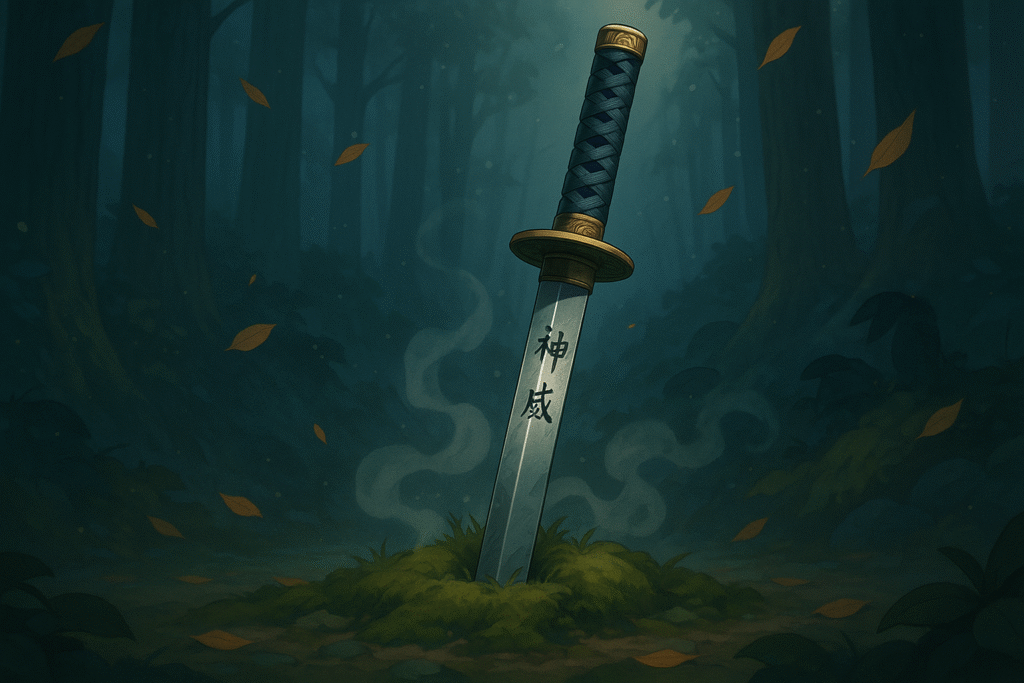Japan, an island nation with a rich maritime history, is surrounded by diverse seas that shape its climate, biodiversity, and way of life. From the icy waters of the Sea of Okhotsk in the north to the Philippine Sea in the south, these bodies of water play a crucial role in Japan’s culture, economy, and environment. This guide delves into the seas of Japan, their unique characteristics, and their impact on the country.
The Major Seas Surrounding Japan
1. Sea of Okhotsk (オホーツク海)
📍 Location: North of Hokkaidō
❄ Climate: Subarctic
🌊 Key Features: Seasonal drift ice, rich marine life
The Sea of Okhotsk is Japan’s coldest sea, located north of Hokkaidō, where frigid waters from Siberia mix with the warmer currents from the Pacific. This region experiences seasonal drift ice (流氷, ryūhyō) during winter, a rare phenomenon that can be seen in places like Abashiri. The cold waters are home to a variety of marine species, including walleye pollock, king crabs, and sea eagles.
2. Sea of Japan (日本海)
📍 Location: West of Honshū, Hokkaidō, and Kyūshū
🌡 Climate: Temperate with seasonal monsoons
🌊 Key Features: Limited tidal variation, high oxygen concentration
The Sea of Japan (also referred to as the East Sea) lies between the Japanese archipelago, the Korean Peninsula, and Russia’s Far East. It has no direct connection to the Pacific Ocean, creating a unique enclosed marine ecosystem. Due to its high oxygen concentration, this sea supports a thriving fishing industry with snow crabs, squid, sardines, and yellowtail being commonly caught. In winter, cold winds from Siberia bring heavy snowfall to the western coast of Japan.
3. Seto Inland Sea (瀬戸内海)
📍 Location: Between Honshū, Shikoku, and Kyūshū
🌡 Climate: Mild and temperate
🌊 Key Features: Calm waters, thousands of islands
The Seto Inland Sea, or Seto Naikai, is a tranquil body of water separating three of Japan’s main islands. Known for its mild climate and stunning landscapes, the sea is home to Naoshima, an island famous for contemporary art, and Miyajima, where the iconic floating torii gate of Itsukushima Shrine stands. The region is also known for producing high-quality oysters and seaweed.
4. East China Sea (東シナ海)
📍 Location: South of Kyūshū, west of the Nansei Islands
🌡 Climate: Subtropical
🌊 Key Features: Shallow continental shelf, typhoon-prone
The East China Sea borders the Nansei Islands, stretching from Kyūshū to Taiwan. It is rich in marine biodiversity due to its shallow waters and warm temperatures. The Kuroshio Current, a major oceanic flow, passes through this sea, bringing tropical fish and coral reefs to the islands of Okinawa, Miyako, and Ishigaki. However, this region is also prone to typhoons, which often hit Japan between June and October.
5. Philippine Sea (フィリピン海)
📍 Location: South of Honshū, bordering the Pacific Ocean
🌡 Climate: Tropical and subtropical
🌊 Key Features: Deep trenches, diverse marine life
The Philippine Sea lies to the southeast of Japan and connects to the Pacific Ocean. It features some of the deepest oceanic trenches, including the Mariana Trench. The waters here are warmer and clearer, making it ideal for diving and marine research. Okinawa’s Yaeyama Islands, part of the Philippine Sea, are home to Japan’s largest coral reef system, with manta rays, whale sharks, and vibrant coral formations.
6. Tsushima Strait (対馬海峡)
📍 Location: Between Kyūshū and the Korean Peninsula
🌡 Climate: Temperate
🌊 Key Features: Narrow passage, crucial shipping route
The Tsushima Strait, also known as the Korea Strait, serves as an important gateway between the East China Sea and the Sea of Japan. Historically, this passage has been a vital trade route, and today it remains a key corridor for international shipping. It is also famous for its nutrient-rich waters, supporting fish populations like mackerel and squid.
Japan’s Ocean Currents and Their Impact
The seas of Japan are shaped by powerful warm and cold ocean currents that influence climate, fishing industries, and marine biodiversity.
1. Kuroshio Current (黒潮) – The “Black Current”
🌡 Type: Warm
📍 Location: Flows from the Philippines past Japan’s eastern coast
The Kuroshio Current is one of the world’s strongest warm ocean currents, bringing tropical marine species to Japan’s southern coasts. It warms the Pacific side of Japan, creating a mild climate along the eastern seaboard. It also supports diverse coral reefs in Okinawa and Shikoku.
2. Oyashio Current (親潮) – The “Parental Current”
🌡 Type: Cold
📍 Location: Flows south from the Arctic, meeting the Kuroshio Current
The Oyashio Current is a cold oceanic flow that originates near Russia and moves southward. It cools Japan’s northern coasts, particularly Hokkaidō, and supports one of the richest fisheries in the world, with species like salmon, sardines, and herring thriving in its nutrient-dense waters.
3. Tsushima Current (対馬暖流)
🌡 Type: Warm
📍 Location: Flows through the Tsushima Strait into the Sea of Japan
The Tsushima Current is a branch of the Kuroshio Current that enters the Sea of Japan, keeping its waters warmer than expected. This current helps sustain year-round fishing activities in regions like Fukuoka and Niigata.
4. Liman Current (リマン海流)
🌡 Type: Cold
📍 Location: Flows southward along the Sea of Japan’s western edge
The Liman Current is a cold-water current originating near Siberia. It brings frigid conditions to the Sea of Japan and influences the winter weather along Japan’s western coastline.
Ecological and Economic Importance of Japan’s Seas
The seas of Japan provide valuable resources that sustain marine life, industries, and traditional practices.
1. Fishing Industry
🐟 Japan is one of the world’s largest consumers of seafood, with its seas supplying tuna, squid, crab, and other seafood for both domestic and international markets.
2. Tourism and Recreation
🏝️ Coastal destinations like Okinawa, the Izu Peninsula, and the Seto Inland Sea attract millions of visitors for diving, snorkeling, and island-hopping.
3. Marine Biodiversity Conservation
🌏 Japan’s waters are home to diverse marine species, from giant Pacific octopuses in the Sea of Japan to manta rays in Okinawa. Conservation efforts, such as coral reef protection and sustainable fishing policies, aim to preserve marine ecosystems.
Final Thoughts
The seas of Japan are not just geographical features—they are an integral part of the country’s history, economy, and environment. Whether it’s the icy currents of the Sea of Okhotsk, the warm coral reefs of the Philippine Sea, or the productive fisheries of the Sea of Japan, each body of water plays a crucial role in shaping Japan’s maritime identity. As climate change and human activities continue to impact marine ecosystems, sustainable efforts are key to protecting these valuable natural resources for future generations.
🌊 Which Japanese sea fascinates you the most? Let us know in the comments! ⛵
Discover More About Japan & Japanese Culture 🇯🇵✨
Looking for more insights into Japanese life, language, and travel? Check out these must-read articles from Wakoku:
📖 Japanese Language & Learning Resources
🔹 Mastering Japanese Alphabet Pronunciation – Learn how to pronounce Japanese characters correctly.
🔹 A Beginner’s Guide to Writing Hiragana Characters – Start writing hiragana with confidence.
🔹 Learn Japanese Kanji Basics: A Beginner’s Guide – Master the foundations of kanji efficiently.
🔹 How to Type Japanese Letters Easily – Learn to type Japanese on your keyboard like a pro.
🔹 How to Say “Hello” in Japanese: The Ultimate Guide to Japanese Greetings – Learn essential Japanese greetings and when to use them.
🏯 Japanese Culture & Traditions
🔹 Experiencing a Traditional Japanese Bathhouse – Discover the etiquette and relaxation of Japanese sento and onsen.
🔹 Essential Drinks Vocabulary in Japanese: Order Like a Pro – Learn how to order your favorite drinks in Japan.
🔹 Mastering Nature Vocabulary in Japanese: A Comprehensive Guide – Expand your Japanese vocabulary with nature-related words.
🚀 Travel & Living in Japan
🔹 The Pros and Cons of Living in Japan: What You Need to Know Before Moving – Understand the ups and downs of living in Japan.
🔹 Kyoto Illumination 2024-2025: A Magical Winter Light Experience – Explore Kyoto’s stunning winter light displays.
🔹 Spas to Visit in Osaka: A Guide to Relaxation in Osaka – Find the best spas for unwinding in Osaka.
🗻 Adventure & Exploration
🔹 Japanese Seafood Names: A Comprehensive Guide for Seafood Lovers – Learn the names of seafood in Japanese for dining and shopping.
🔹 Expand Your Japanese Fruits Vocabulary – Discover common and unique Japanese fruit names.




